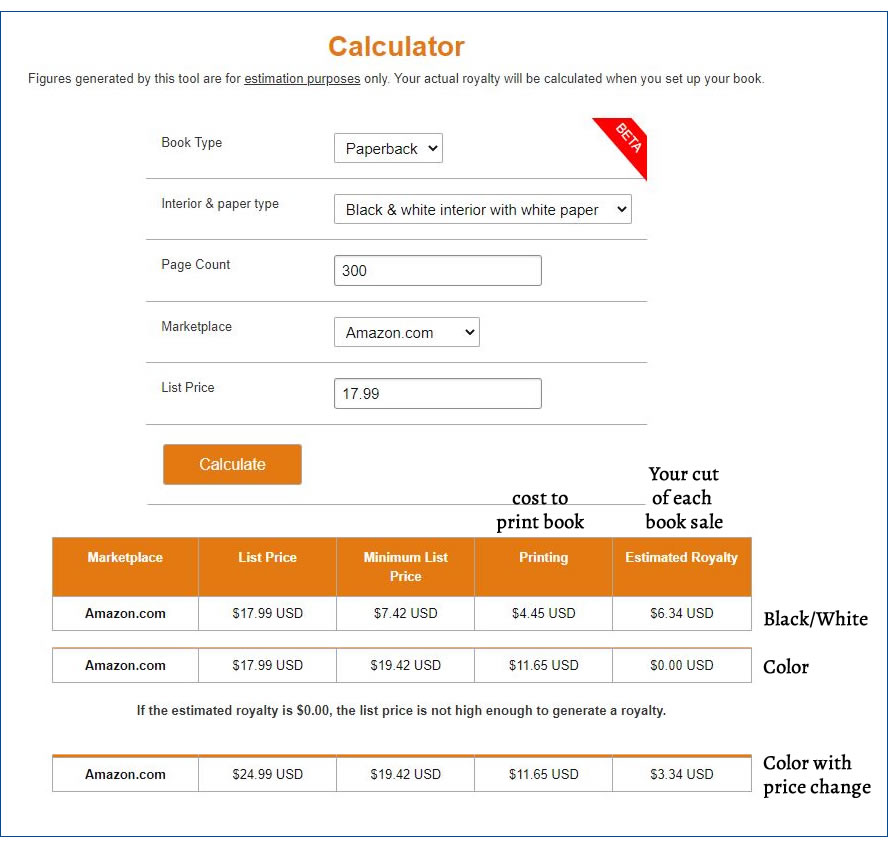Print on Demand
Print on demand (POD) is another name for digital publishing. It allows companies such as Amazon and Ingram Spark to avoid having to store printed books in inventory. Instead, they print a book in response to a customer order.
In the days before digital printing presses were invented, publishers would estimate how many books would sell, and then print a run of say, 1000 books. For a popular author like Grisham or Patterson, they might print a run of 10,000 books. The author would get an advance on the “hoped-for” sales and then be paid a yearly royalty for any sales past that advanced amount. The publisher would then have to store the books while they waited for sales orders.
But today, that’s only one way to make money as an author. The use of digital printing presses make the process for independent authors and publishers much easier. There’s no book storage, no sales estimates, and no hassle to print just a few books at a time.
How Print On Demand works on Amazon
If you upload your book onto Amazon to sell, Amazon will charge you to print the book, and then take a percentage of the sale price. The remaining profit is your royalty and you get paid monthly instead of yearly.
So for instance, let’s say you upload your 300 page novel to Amazon. You choose to have it printed in black and white, and price it at $17.99. If someone orders it, Amazon will print it and ship it. They then deduct the printing cost (about 4 dollars) and then take a percentage of the remaining royalty before they credit your account for the sale. You can figure out how much royalty you’ll receive for each book sale using Amazon’s Printing Cost and Royalty Calculator.
At the end of each month, Amazon will deposit the sales total for that month in your bank or send you a check, depending on how you set up your account.
Printing Costs for Color vs Black and White
In general, books printed in color are significantly more expensive than those printed in black and white. The number of pages and the size of the book also change printing costs. You can see the big differences in printing costs in the comparison below. Note that I had to change the cost of the book on the color printing option from 17.99 to 24.99 just to generate a royalty other than 0.00.

Print on demand and digital publishing presses have really changed the publishing business, making it much easier for the growing self publishing community to flourish.
There are quite a few print on demand companies from which to choose. Amazon is just the most well-known. You can also go to Barnes and Noble Press, Apple Books, Rakuten Kobo, Draft2Digital and BookBaby. Some of these include author services as a business model or they may be an aggregator which will distribute your book to other platforms. See this informative post at 48hrbooks for more information about the types of print on demand companies available.
Vanity Publishing vs Self Publishing
Some of my clients have asked me about vanity publishing. Vanity publishers are like the middle guy between a legitimate publishing house like Simon and Schuster and a self publisher. Vanity publishers pitch to authors as a source of editing services, book marketing and other daunting publishing tasks that large publishing houses offer. They generally offer their services as a "fix" for the complexity of self publishing.
The trade-off is that they will ask you to sign a contract transferring all rights to your book to them. This means you lose control of the book publishing process. The vanity publisher can then do whatever they want with your book, including declining to publish it, or prohibiting the book from being sold on other platforms such as Amazon.
My advice is to avoid any vanity publishing press or any publisher that wants you to sign over the rights to your book. The best part of self publishing is retaining control of your work, so stick with that and run far away from anyone who wants you to do otherwise.
The Alliance of Independent Authors has more information and a service which identifies scam vanity publishers.
